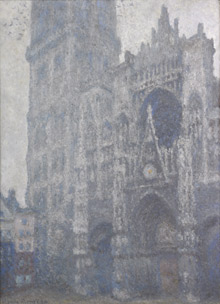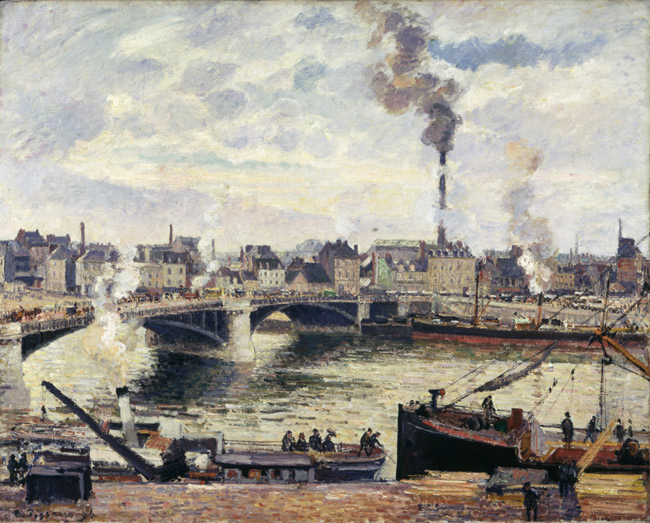The Normandie impressionniste festival, from June to September 2010, pays tribute to Impressionism throughout the territory of Higher and Lower Normandy. This multi-disciplinary event (encompassing painting, music, cinema and literature), at a scale rarely seen in France, is a perfect opportunity to discover the exceptional heritage and all the creativity that lies in Normandy, the native region of the movement. It is in this context that the musée des Beaux-Arts de Rouen, which houses the largest Impressionist collection aside Paris, presents some one hundred masterpieces by the greatest masters, dedicated to the town with «one hundred church bells».
Paintings from the world over
This nationally important exhibition which is to be the major event of the festival brings together a group of exceptional works of art from private and public collections from all over the world, among them various master pieces never shown before in France. Over one hundred and thirty paintings by great painters from the end of the XIXth century, led by Monet, Gauguin and Pissarro, will allow the visitors to explore one of the last great themes in the history of Impressionism that has not yet been the focus of an exhibition, the role the Normand capital played in this pictorial revolution. The works are presented in a mostly chronological order. But at certain moments in the exhibition some iconographic themes are isolated in order to show the persistence of motifs now classical, found over various decades.
Monet and his Cathedrals
The exhibition covers a very large perspective, from the forerunners of Impressionism such as Turner to the representatives of the School of Rouen like Albert Lebourg, and sheds light on unknown artists such as Charles Fréchon, Robert-Antoine Pinchon or George Morren. But it grants special attention to three masters. Claude Monet is the one who seems the most intimately linked to the town. During his first stays, in 1872-73, Rouen is above all a port in which large trading ships anchored. The paintings he produced at the time show a little-known aspect of his «aquatic» research, just before Impression, soleil levant. He came back to Rouen in the spring of 1892 to create his first series of Cathedrals, and the second on the following spring. This mythical ensemble, one of the greatest revolutions in the history of art, would be finished in his workshop, and dated 1894. The exhibition presents eleven of those paintings, an unexpected blessing in 2010 when masterpieces constantly on demand travel ever so much less.
 Claude MONET The cathedral of Rouen, the gate and the Albane Tower, grey skies, 1893 Oil on canvas, Rouen musée des Beaux-Arts
Pissarro on the other hand began in Rouen an extraordinary story of hotel rooms from which he painted, from 1883 to 1898, the founding masterpieces of the modern urban landscape. But in 1883 Pissarro still worked very often outdoors where his points of view were on either side of the Seine. His first vision of Rouen still includes peaceful embankments, even though the urban excitement seen from above interested him as can be seen in the masterpiece of the Courtauld Institute in London, La Place Lafayette. It is greatly due to Pissarro's Influence that young Paul Gauguin, who wished to leave Paris, also settled in Rouen in 1884, where he stayed for ten months. His ill-known production there poses essential questions on Impressionism in the middle of the 1880s. The originality of these paintings also lies in the fact he stationed himself in his residential district, ignoring the downtown area and very rarely painted the Seine. Gauguin's Rouen is a green and mysterious village, with a very particular relief that suggests vertical and closed visions, in which the spectator has the impression of burying himself.
PUBLICATION:
Catalogue: Une ville pour l’impressionnisme, Monet, Pissarro et Gauguin à Rouen, introduction by Laurent Salomé, texts by Laurent Salomé, Richard Brettell, Claire Durand-Ruel Snollaerts, Jeanne-Marie David, James Rubin, Claire Maingon, François Lespinasse, Skira Flammarion, 472 pages, 39 €
To see other illustrations, click on VERSION FRANCAISE
at the top of the page.
|









